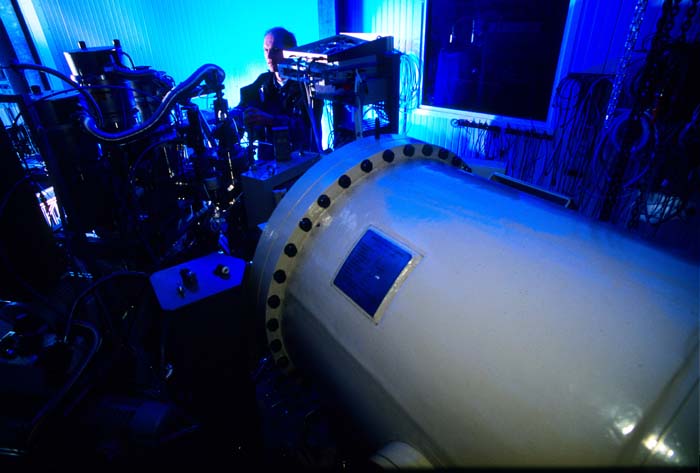
At the Gran Sasso National Laboratories of INFN, the LUNA collaboration has recently obtained important results for the understanding of red giant stars, reproducing stellar conditions in the laboratory. The measurements conducted have in fact made it possible to determine with greater accuracy the relative abundances of the two stable isotopes of carbon in these stars, establishing new reference values. A paper describing the research was published in the last days in the international journal Physical Review Letters.
In nature there are two types of stable carbon atoms, 12C and 13C. In terrestrial rocks, 1 atom of 13C is found for every 100 atoms of 12C, while 13C is more abundant in living beings. The synthesis of chemical elements such as carbon occurs inside stars. The Carbon-Nitrogen-Oxygen (CNO) cycle, proposed by Hans Bethe in 1938, explains how a star more massive than the Sun produces the energy necessary for its sustenance through nuclear fusion reactions. In some stars known as red giants, for example Arcturus, the fourth brightest star in the sky, 13C is significantly more abundant, having 11 atoms of 13C for every 100 atoms of 12C. Solving the mystery of the origin of life also involves understanding the processes that determine the 12C and 13C ratio in nature. By replicating in the laboratory, the reactions of the first two processes of the CNO cycle (12C+p->13N and 13C+p->14N), the LUNA collaboration measured the probability for these reactions to occur in stars, and determined the ratio of the two stable atoms of carbon in giant stars. Results reveal abundances of 12C and 13C isotopes which are 25% and 30% lower than those used today in stellar models.
“The very low background characteristics of the Gran Sasso National Laboratories, together with the almost thirty-year experience of the LUNA collaboration in measuring processes of astrophysical interest with extreme precision – comments Gianluca Imbriani, researcher at INFN and professor at the University of Naples Federico II, spokesperson of the experiment – have led to this extraordinary result, we added another important piece in the understanding of red giants.”
LUNA (Laboratory for Underground Nuclear Astrophysics) is an international scientific collaboration comprising approximately 50 researchers from Italy (Gran Sasso National Laboratories, the INFN Divisions and the Universities of Bari, Genoa, Milano Statale, Napoli Federico II, Padua, Roma Sapienza, Turin, the Collurania Observatory of the National Institute of Astrophysics), Germany (Helmholtz-Zentrum Dresden-Rossendorf), Hungary (ATOMKI and Konkoly Observatory), and the United Kingdom (University of Edinburgh).





